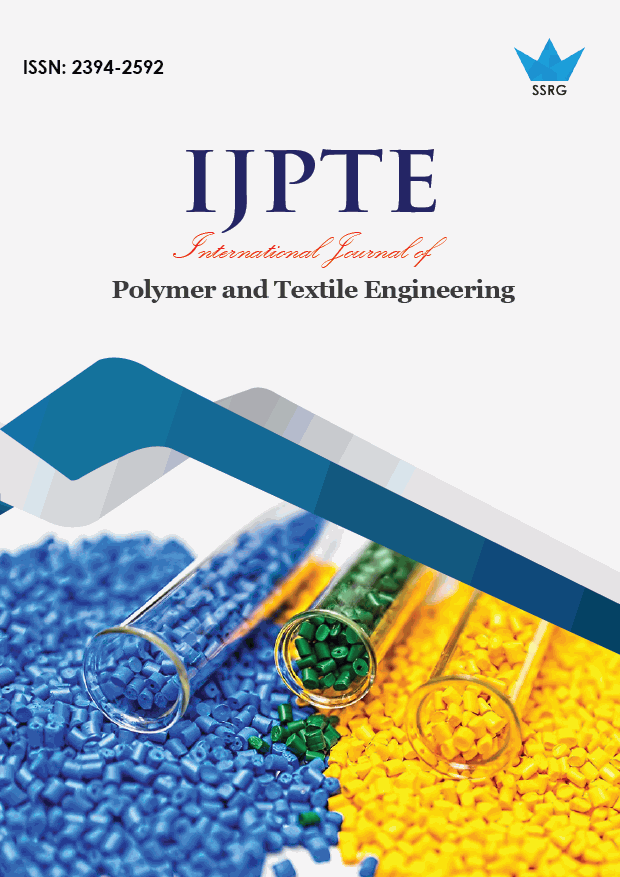Jute Aggregates as Lumber Substitute

| International Journal of Polymer and Textile Engineering |
| © 2017 by SSRG - IJPTE Journal |
| Volume 4 Issue 3 |
| Year of Publication : 2017 |
| Authors : Lorenzo, Vincenzio |
How to Cite?
Lorenzo, Vincenzio, "Jute Aggregates as Lumber Substitute," SSRG International Journal of Polymer and Textile Engineering, vol. 4, no. 3, pp. 1-5, 2017. Crossref, https://doi.org/10.14445/23942592/IJPTE-V2I4P101
Abstract:
Jute fibre is anauspicious reinforcement for use in composites on account of its low cost, low density, high specific asset and modulus, no health risk, easy availability, renewability and much lower energy prerequisite for processing. In recent years, there has been an increasing interest in finding new applications for jute fiber reinforced composites that are conventionally used for making ropes, bags, hessians, sacking, mats, and carpet.To protect environment, consumptions of wood should be reduced that will increase number of tree in the world which can maintain the balance in nature. A major serving of woods are used for making home furniture, household products and erection and constructions. In all these cases wood can be replaced by composite materials made from natural fibers like jute, coir, sisal etc. Jutefibercombinations enjoy excellent probable as wood substitutes in view of their low cost, easy accessibility, saving in energy and pollution free production. In order to improve upon the laboratory-industry linkages towards application development & commercialization, some advanced composites mission launched on jute composites such as 'Jute-Coir Composites Boards’, 'Jute-glass composite components for railway coaches’ and others.The use of jute fiber mats in combination with polymer films theoretically offers a rapid and simple means of manufacturing combinations through film stacking, heating and press-consolidation.
Keywords:
Jute Fiber, Jute Composite, Wood, Natural Fiber, Composites.
References:
[1] ―Fibre-reinforced composites: Materials, Manufacturing, and Design by Mallick P.K. published on 1988.ISBN 0-8247-7796-4.
[2]www.worldjute.com/diversification/diversification_composite_techno_8.html.
[3] www.woodweb.com.
[4] ―Investigation on jute fibres and their composites based on polypropylene and epoxy Matrices Phd thesis by Der FakultätMaschinenwesen, TechnischenUniversität Dresden, 2006.
[5] Das S, ―Jute composite and its applications, International workshop IJSG, 2009.
[6] www.jute.org.
[7] Mohanty A. K., Misra M. and Hinrichsen G. Biofibers,―biodegradable polymers and biocomposites: Macromolecular Materials and Engineering, 2000 a, 276,1-24.
[8] Samajpati S., Sengupta S., Chattopadhyay S. N., Dey A. and Bhattacharya S. K.: ―Jute- based composite products , Asian Textile Journal, July 2005, p70-72.
[9] www.tifac.org.in.
[10] Placketta David, Løgstrup Tom Andersenb, Walther BatsbergPedersenc, LotteNielsenc: ―Biodegradable composites based on l-polylactide and jute fibres, Composites Science and Technology 63 (2003) 1287–1296.

 10.14445/23942592/IJPTE-V2I4P101
10.14445/23942592/IJPTE-V2I4P101